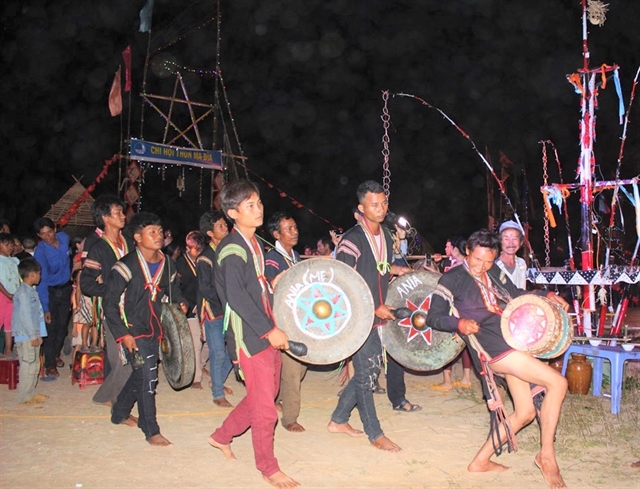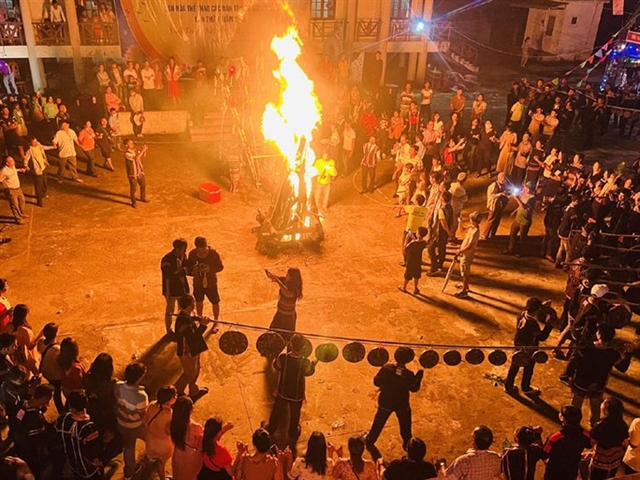
NATIONAL HERITAGE: People from the ethnic minority groups of Chăm and Ba Na play cồng chiêng (gongs), which were recognised as a Masterpiece of Oral and Intangible Heritage of Humanity by UNESCO in 2005. — Photo courtesy of the organiser.
PHÚ YÊN — A new art project preserving cồng chiêng (gongs), a traditional musical instrument of the Tây Nguyên (Central Highlands) region, has been launched in Phú Yên Province.
The project is organised by the province’s Department of Culture, Sports and Tourism.
It aims to expose young people from the ethnic minority groups of Chăm and Ba Na to the cồng chiêng, which were recognised as a Masterpiece of Oral and Intangible Heritage of Humanity by UNESCO in 2005.
It offers training courses, helping the participants play the gongs and learn about the cultural roots of the instruments, their importance to the spiritual life of the Chăm and Ba Na people and the journey to becoming an intangible cultural heritage.
The information and knowledge of traditional culture and lifestyle are also included.
The project attracts traditional art performers and artisans of Phú Yên who have many years working to perform and expand the art of cồng chiêng.

ETHNIC GONGS: Young people learn to play cồng chiêng (gongs), traditional musical instruments of the Tây Nguyên (Central Highlands) region, through a new art project launched in Phú Yên Province. — Photo courtesy of the organiser.
“Our project encourages local youth to discover and play cồng chiêng, which is part of their heritage promoted and handed down among generations,” said older villager and artisan La Chí Thái of Đồng Xuân District. "Training courses on playing cồng chiêng are a way to convey love and pride for the national culture to youngsters.”
According to Thái, cồng instruments produce a single, uniform sound, while chiêng are flat and offer a wider range of notes. Different sizes of gongs are characterised by family names: mother, father, and older sister.
Cồng chiêng can be drummed by hand or with a cloth-covered stick.
The instruments appear in most of the rituals and ceremonies of ethnic minorities in Tây Nguyên. They are not only musical but also serve a cultural function for about 20 ethnic minorities, including the Chăm and Ba Na.
"Cồng chiêng performances staged by artists from local art troupes will also be offered through our project," he said. — VNS
OVietnam